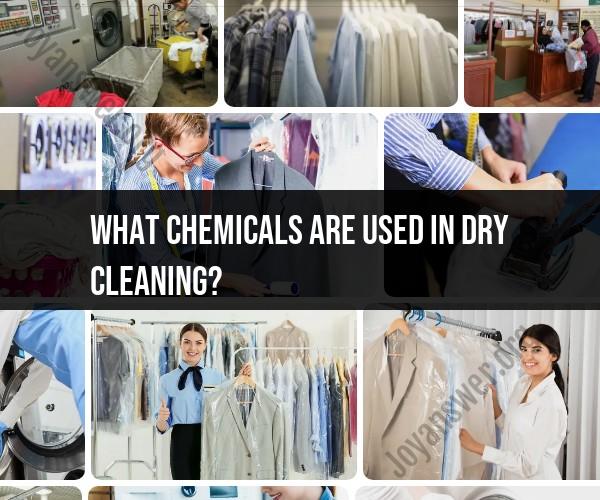What chemicals are used in dry cleaning?
Dry cleaning is a cleaning process that uses chemical solvents rather than water to remove dirt, stains, and odors from fabrics and textiles. The primary chemical solvent traditionally used in dry cleaning is perchloroethylene (PERC), although other alternative solvents have gained popularity due to environmental and health concerns. Here's an overview of the chemistry of dry cleaning, including the chemicals typically used:
1. Perchloroethylene (PERC):
- Chemical Formula: C2Cl4
- Description: PERC, also known as tetrachloroethylene, is a chlorinated hydrocarbon solvent. It is a colorless, nonflammable liquid with a slightly sweet odor.
- Properties: PERC has a high capacity for dissolving greases, oils, and other organic compounds. It is stable, non-reactive, and does not readily mix with water.
- Use in Dry Cleaning: PERC has been a widely used dry cleaning solvent for decades due to its effective cleaning properties. However, it is classified as a hazardous air pollutant (HAP) and has environmental and health concerns associated with its use.
2. Hydrocarbon-Based Solvents:
- Hydrocarbon solvents, such as Stoddard solvent or mineral spirits (similar to those used in paint thinner), are becoming popular alternatives to PERC.
- They are less toxic and do not pose the same environmental and health risks as PERC.
3. Green Solvents:
- Some dry cleaning businesses have adopted environmentally friendly and biodegradable solvents, such as liquid silicone (D5), which are considered more sustainable options.
- These solvents are non-toxic and have a lower environmental impact.
4. Detergents and Surfactants:
- In addition to the primary solvent, dry cleaning machines use detergents and surfactants to enhance cleaning performance.
- These chemicals help emulsify and lift soil and stains from fabrics.
5. Additives:
- Some dry cleaning processes may incorporate additives like corrosion inhibitors, fabric brighteners, and deodorizers to improve cleaning results and fabric appearance.
Chemistry of the Cleaning Process:The chemistry of dry cleaning involves the following steps:
Pre-Spotting: Before placing garments in the dry cleaning machine, stains and spots are treated with specialized cleaning agents or solvents designed to break down and dissolve specific types of stains, such as oil, grease, or ink.
Cleaning: Garments are loaded into the dry cleaning machine, which agitates them in the solvent. The solvent dissolves and suspends oils, soils, and other contaminants.
Rinsing and Extraction: After cleaning, the solvent is drained, and the garments are rinsed with fresh solvent to remove any remaining contaminants.
Drying: Garments are then dried, often in a controlled environment, to evaporate any residual solvent.
Finishing: Finally, garments are pressed, steamed, and finished to restore their appearance and texture.
It's important to note that the choice of solvent and cleaning process can vary from one dry cleaning establishment to another. Regulations and consumer preferences regarding the use of specific solvents have evolved over time, with an increasing emphasis on more environmentally friendly and health-conscious options. Therefore, it's advisable to inquire about the specific cleaning methods and solvents used by your preferred dry cleaner.










